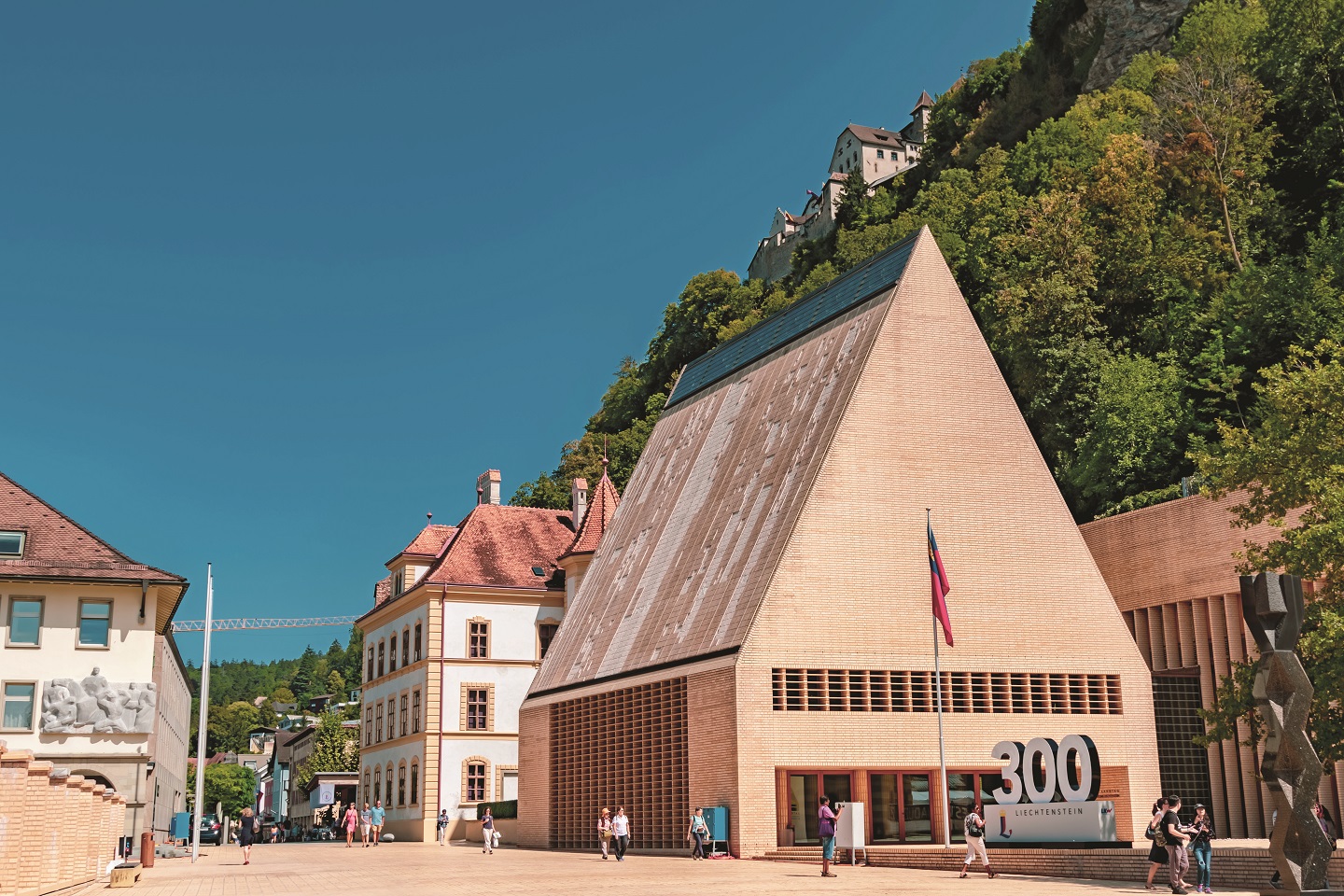
The Hansjörg Göritz-designed Landtag Building (All photos: LGT Bank)
To most Malaysians, private banking is the first thing that comes to mind when asked about one of the tiniest countries in the world — Liechtenstein. Indeed, for such a bijou nation, its prowess at money management is undeniable. Its first bank was founded in 1861 and end-2016 statistics show that the banks of Liechtenstein manage over CHF230 billion (RM968 billion) in client assets globally. And one of the world’s leading private banks and asset management groups, LGT, enjoys the added gravitas of being owned and operated by the country’s ruling family, making it the world’s largest family-owned enterprise of its kind. Its chairman, His Serene Highness Prince Philipp von und zu Liechtenstein, is brother of the current sovereign and the princely family remains LGT’s majority shareholders.
Money matters
Small but perfectly formed, the world’s sixth-smallest nation, to be precise, which is celebrating its tercentenary this year, has many compelling qualities going for it. Its population is very small, less than 40,000 people in a surface area that roughly measures 160 sq km. For Asians who are used to megalopoleis, not having to jostle for space or having an elbow stuck in your face during the morning commute are luxuries not to be sniffed at, not to mention that it is a verdant land, cradled in the Rhine Valley and surrounded by forest cover and snowy alpine peaks. The crime rate is also, as expected, among the lowest in the world and it remains that rarest of lands where leaving one’s house unlocked while stepping out is not out of the ordinary in the least.
vaduz.jpg
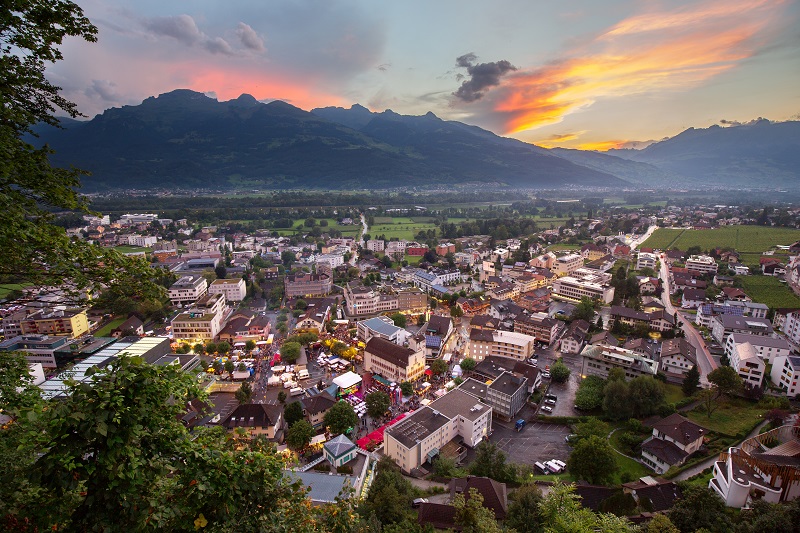
Liechtenstein’s development took place rapidly only after World War II, transforming itself from a poor and sparsely populated alpine state into a nation with no government debt and impressive levels of capital reserves from the 1950s onwards. In fact, Liechtenstein enjoys an annual AAA rating by Standard & Poor — the rating agency’s highest, unchanged since 1996 — which puts Liechtenstein on a par with Switzerland and Germany.
And although international asset management is one of the country’s most important economic components, an export-led, quality-focused industrial sector comes a close second. It is in Schaan, one of Liechtenstein’s 11 municipalities, and its most populous with 6,000 inhabitants, where Hilti Corp, the multinational company specialising in professional anchoring and demolition systems for construction sites, is headquartered.
The history
For those unfamiliar with the country, the princely House of Liechtenstein is one of Europe’s oldest noble families, tracing its history back to the 12th century. It was in 1608 that the Holy Roman Emperor accorded the head of the family the hereditary title of “prince” and, in 1719, Charles VI decreed that the counties of Vaduz and Schallenberg be promoted to principality status. For centuries, its princes played important roles in the royal courts of Europe, particularly in the Habsburg imperial court. As such, the Liechtenstein princes traditionally lived in Austria, their ancestral estates situated in the borderlands of lower Austria and Moravia. The country takes its name from the white stone used to build one of their most ancient castles, located on the outskirts of the Vienna Woods.
rts2mmyh.jpg
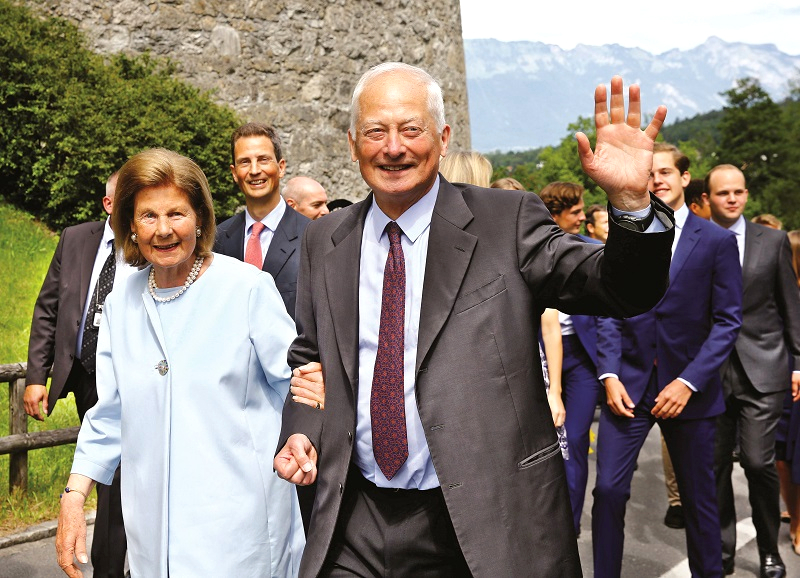
It was WWII that sparked the seismic shift that forever changed the way the princes governed the land. In 1938, Prince Franz Josef II, father of the current head of state Prince Hans-Adam II and grandfather to Prince Alois, both of whom currently handle government affairs, made the decision to leave Austria due to the looming Nazi threat to move to Liechtenstein, where the first coalition government was formed. It was also during this tense time that a huge portion of the family’s famous artworks were transferred to Liechtenstein’s capital of Vaduz for safekeeping. Today, the princely family is reputed to own one of the most important private art collections in the world, containing major works of European art spanning five centuries with at least 1,700 paintings that include works by Rubens, Rembrandt, Frans Hals, Anthonis van Dyck and Rudolf von Alt.
Sights and sounds
Naturally, with art being one of the principality’s priorities, visitors should not miss the Kunstmuseum Liechtenstein in the heart of Vaduz. Currently, a major exhibition in honour of the nation’s 300th anniversary titled Liechtenstein: On the Future of the Past is ongoing until January 2020 and pursues a special narrative that juxtaposes artworks across genres and eras and challenges visitors to explore the past and present while contemplating the future. Artworks and installations not to be missed include Terra, a 1570 painting by Giuseppe Arcimboldo, the Italian artist famous for manipulating images of natural objects to create fascinating visual compositions; Andy Warhol’s Cherry Marilyn; two variations of Monique by Julian Opie — This is Monique 18 and Monique Housewife/Businesswoman; and Cady Noland’s Celebrity Trash Spill, which offers an evocative assortment of broken camera equipment, cigarette packs, sunglasses and tabloid magazines.
national_museum_treasure_chamber.jpg
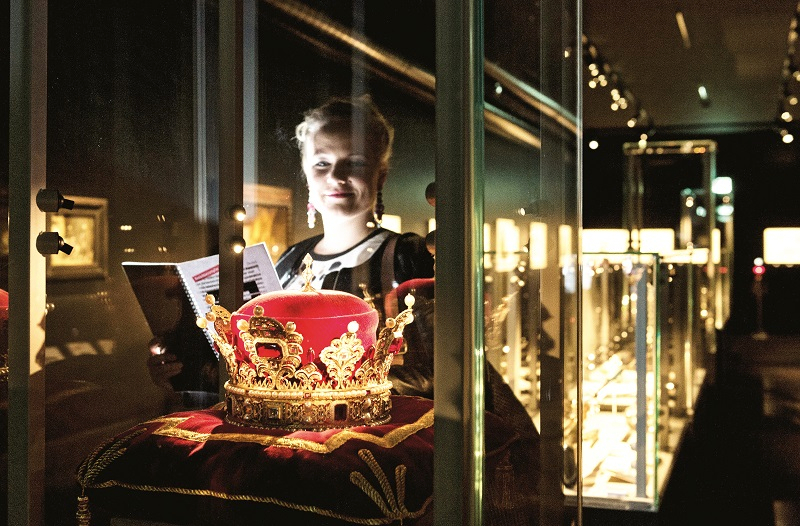
As Vaduz is a walkable capital, most of the country’s sights and sounds are located along one main street. This includes the Hansjörg Göritz-designed Landtag Building, the seat of the principality’s parliament, and for the philatelically-inclined, the Postage Stamp Museum, a showcase of rare Liechtenstein stamps and historical documents. Almost next door is the Treasure Chamber of the Principality of Liechtenstein, where the prince’s crown and Fabergé eggs, alongside an eclectic assortment of precious things, such as moon rocks from the Apollo 11 and 17 missions, are displayed. Those travelling with young children would appreciate a fun 30-minute ride on the toy-like Citytrain or Bummelzug that trundles through the streets of Vaduz and its surroundings.
Eat and drink
For a country with such a small population, visiting gourmets will be thrilled to know that there are not one but two Michelin-starred restaurants to take advantage of. If you have a table booked at the Park Hotel Sonnenhof’s Restaurant Marée, be sure to come early to enjoy aperitifs on its outdoor terrace, aptly named the Eagle’s Nest, accompanied by views of the fairytale-like Vaduz Castle in the distance, before proceeding inside to enjoy the chef Hubertus Real’s fusion-esque cuisine. True connoisseurs, however, make a beeline for the Restaurant Torkel, ensconced amid the princely Herawingert vineyards and housed in a medieval building.
restaurant_torkel1.jpg
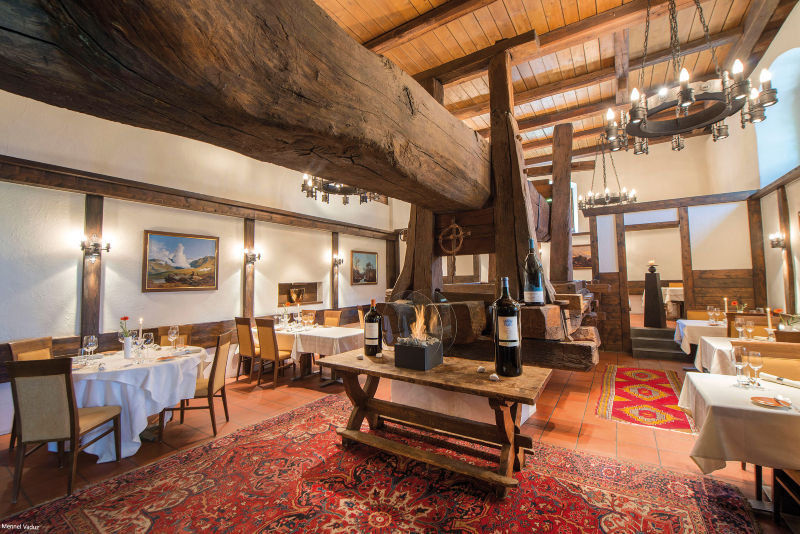
The chef, Ivo Berger, the second generation to head Torkel’s kitchens, is exceedingly talented, so expect a parade of delectables that may include honey mustard mousse with a variation of Orkney salmon, bacon-wrapped venison and roast dates and beef and leek raviolo à la créme. The attentions of Torkel’s sommelier, the affable and knowledgable Tobias Oswald, are also guaranteed to ensure your meal here is nothing short of memorable. Be sure to pair dinner with as many wines from the prince’s label as possible as they are hard to find, let alone taste, outside of the principality. The cellar doors of the nearby Princely Wine Cellars are also open to the public and, if the idea of sampling local grape varietals like zweigelt and traminer tickle your fancy, be sure to arrange for an on-site tasting session.
The great outdoors
Because a massive mountain ridge cuts through much of the country, the year-end is a particularly exciting time for a holiday in Liechtenstein. The country’s highly regarded mountain village of Malbun, a short drive from Vaduz, is a wonderland come winter. Its list of visitors is highly illustrious. Prince Charles and Diana, Princess of Wales, famously visited in the 1980s as did Japan’s Emperor Naruhito, when he was still crown prince. Over 20km of snowy slopes allow for world-class skiing and snowboarding while little alpine adventurers can look forward to sledding and tobogganing. Local falconer Norman Vögeli is also somewhat of a celebrity in the area.
mountains_malbun.jpg
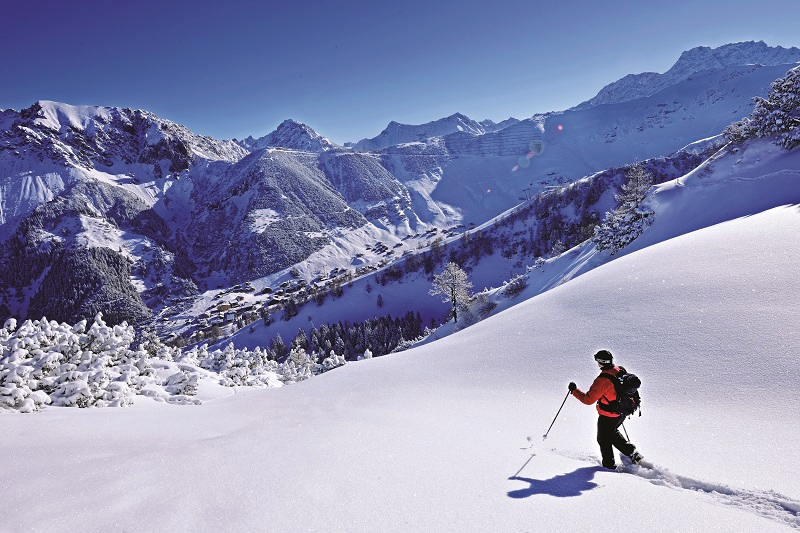
His birds of prey show at the Hotel Falknerei Galina offers a fascinating up-close experience with the majestic creatures and is certain to be a hit with young and old alike. Those with a penchant for furry Andean mammals might prefer the distractions offered by the llama and alpaca park en route to Malbun. In warmer months, treks can be arranged in the company of these fascinating creatures, with perhaps the perfect finale taking the form of a picnic meal or cheese fondue dinner.
Liechtenstein remains very much under the travellers’ radar but, for those privileged to venture here, be it for banking or beyond, the last monarchy in the heart of the Alps is very much a gem waiting to be discovered.
This article first appeared on Nov 4, 2019 in The Edge Malaysia.


